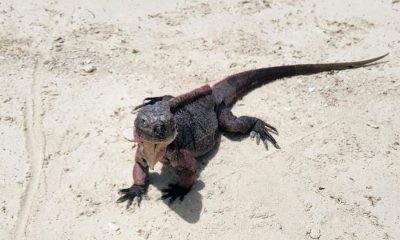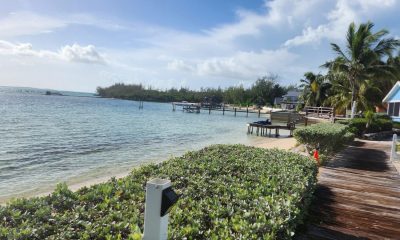KIGALI, RWANDA – Africa, known as the motherland, is rich in culture, history and natural resources. The continent is also home to many of the world’s animal species. Our Jerome Sawyer has spent the last week the Central African State of Rwanda. He along with Our News Cameraman Terran Knowles decided to treat us to an African Safari, through their lenses.
The day begins with a 5:45 pick up from out hotel in Kigali. Our driver George is on time, waiting to take us on the journey.
It is a 3 hour drive out of the city of Kigali, and into the Eastern province, the largest in Rwanda. It is a stark variation from what we’ve seen all week.
This is rural territory farmland. Along the way, farmers are transporting goods to market. It is a long drive, over many hills and around steep curves and lots of pedestrians.
At times, we near the border with Uganda and Tanzania. Eventually, we arrive at the Akagera National Park.
In this park are 500 species of birds and 11 species of wildlife. This is also home to the big five – lions, elephants, buffalos, rhinos and leopards.
Called the big five because they are the hardest five species to hunt.
Our driver George is now, our official park guide. Akagera isn’t just home to animals. There are 10 lakes, three camp sites and four lodges.
We embark on a five hour tour of this magnificent park. Our very first citing is an impala. It’s a male. Only the male species have horns.
He seemingly poses for our cameras. Obviously accustomed to the “annoying tourists”
Next, we come across a group of sunbathing hippopotamuses. We soon find out they are the world’s deadliest large land mammal, killing an estimated 500 people per year in Africa. There goes my notion of the “happy hippos”.
Along the way, we notice patches of burnt shrubbery and grass. The park is deliberately set a fire in June and July to pervert future uncontrollable fires.
It’s not long before we come upon the first of a the big five. A rare siting, I am told.
Two lions, nestled in the shade of trees. They appear unphased, but we are told they are watching us closely.
They hunt for only two hours a day – usually at night or early morning. The rest of the time they lounge and sleep. Our guide says, the laziest species in the park.
After hours within the lush forests, we enter the savanna. A wide-open space with short grass. A favorite among many animals here, because they can
See approaching predators and the grazing grass is good here. The savanna is home to warthogs and gazelles as well.
These driving paths are a favourite for zebras. We must stop often, for “zebra crossings”.
The feisty one of a kind four legged animals are easily frightened but still take their time in “getting out of the way”, from the moment we see the lone elephant in the distance, we are excited.
Even at a safe distance, our guide is closely watching, as they are known to charge without warning.
It’s a false alarm… and we move on.
As we come almost to the end of the trail… It’s the moment I’ve been waiting for the entire trip. The majestic giraffes. These gentle giants watch with curiosity as we exit our jeep for an up-close and personal experience – within reason of course.
For this reporter, it’s a magical and comical moment.
While they go to great lengths to protect these animals in their natural habitats the park workers provide no assistance to the sick, injured or dying. I am told, they allow nature to take its course.
A perimeter fence keeps the animals in, and neighbors and their crops protected.

 Court2 days ago
Court2 days ago
 National5 hours ago
National5 hours ago
 National5 hours ago
National5 hours ago
 Court2 days ago
Court2 days ago
 National2 days ago
National2 days ago
 National2 days ago
National2 days ago
 National2 days ago
National2 days ago
 National1 day ago
National1 day ago
















